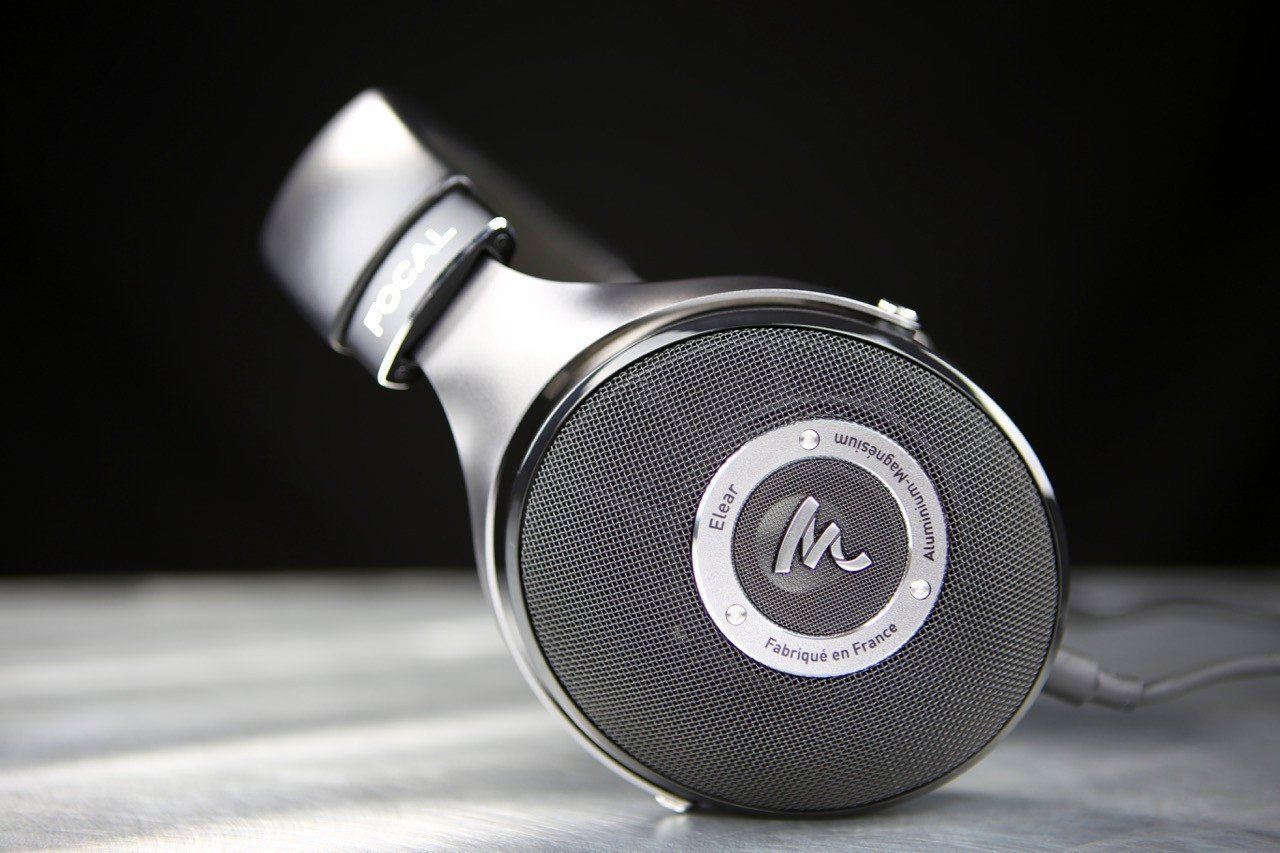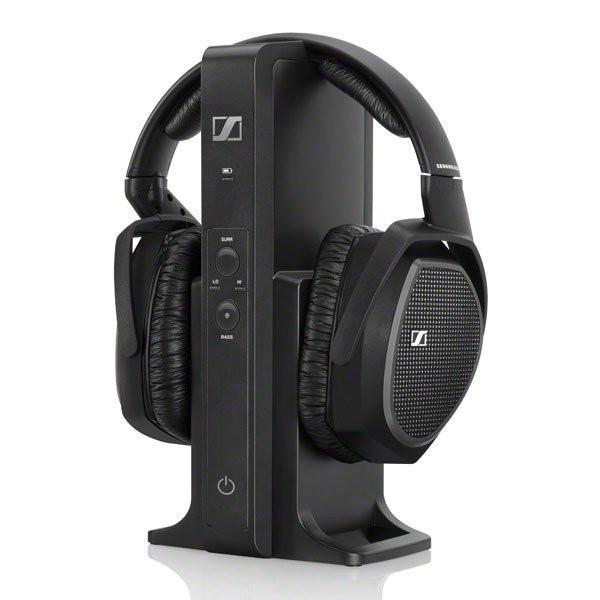The Focal Elear open-back dynamic headphone was officially released in late 2016 and remains in high demand and limited availability as they slowly trickle out of Focal’s St Etienne France manufacturing facility.
The reason for the Elear’s incredibly fast ascent into the audiophile headphone firmament is clear: we think its easily the best value to be found right now in high-end headphones.
Our Headphone.com review team spent some quality time evaluating the Focal Elear against its big brother, the Focal Utopia priced at $4,000, as well as other headphones priced slightly closer to the Elear's $1,000 perch.
Obviously the most attractive thing about the Elear is that its audio DNA and musical performance strengths are directly descended from the most revelatory headphone currently available in the industry, the Focal Utopia priced at four times the cost of the Elear. But despite a few outer cosmetic similarities, they are wholly different headphones constructed with completely different materials and methodologies.
 But exactly just how close is the Elear sonically to the stunning Utopia? Is it even a competition? Well, we discovered some very wonderful things during our extensive review period comparing and contrasting the Focal Elear against all comers. We think the Elear plainly holds its own against any other audiophile headphone we stacked against it, including the superlative and much more expensive Utopia. Sure, it doesn't quite match the emotionally engrossing, free-flying carpet of sound presented by the world-beating Utopia, but boy does it ever come amazingly close.
But exactly just how close is the Elear sonically to the stunning Utopia? Is it even a competition? Well, we discovered some very wonderful things during our extensive review period comparing and contrasting the Focal Elear against all comers. We think the Elear plainly holds its own against any other audiophile headphone we stacked against it, including the superlative and much more expensive Utopia. Sure, it doesn't quite match the emotionally engrossing, free-flying carpet of sound presented by the world-beating Utopia, but boy does it ever come amazingly close.
FOCAL ELEAR VERSUS FOCAL UTOPIA
As we mentioned, these two top Focal reference headphones share similar overall sizing, excellent wearing comfort and basically identical headphone cables but they do differ in materials science and, of course, in sound quality performance.
To begin with, the headband frames are differently built with the Utopia using a new carbon fiber headband and yoke while the Elear uses a lightweight, less expensive aluminum assembly for its headband frame. Both designs are highly ergonomic, very comfortable and will fit a wide variety of head sizes and ear shapes, which is not something we can say about all high-end audiophile headphones.
Most impressively, the Elear has a very similar dynamic extension and punchy power to the Utopia but it just misses the tactile full-bodied sense of depth and near-perfect soundstage image layering that gives the Utopia a dimensional vastness no other headphone can quite muster.
The Elear is also a bit less controlled on the bottom-end compared to the Utopia’s tautly rendered bass extension but, again, the Elear manages to come close to its big brother’s excellent low-octave textural detail with plenty of laid-back bass slam replacing the hair-raising deep-focus bass heard in the upscale Focal Utopia.
Transparency is also quite excellent in the Focal Elear and its faithfulness to the music is both insightful and forgiving. Despite its extended upper frequency response and simple, clear-cut sense of organization, there are no strident treble peaks audible in the Elear’s even-toned upper highs presentation.
The Focal Elear's seamless midranges offer a genuine engagement with voices and vocals that sound clear and direct with a full chesty presence that doesn't shortchange balance for zing or hype. Indeed, all parts of the Elear's tonal delivery appear exceptionally calibrated with the minor exception of a hint of upper bass billow, which many listeners may actually find perfectly acceptable and fun given the tightly held low-end reins.
IT'S ALL ABOUT THE BERYLLIUM
The main engineering difference between the Utopia and Elear - and one of the main factors responsible for the big price gulf - boils down to the different drivers used in each model, with the Utopia employing incredibly expensive, 100% pure rare beryllium drivers like those found in Focal’s highly lauded $200,000 room speakers.

The Elear headphone uses far less pricey aluminum/magnesium alloy drivers engineered by Focal exclusively for the Elear. Both models employ Focal’s newly devised 'M-shaped' dome driver construction, so the differences in sound quality are plainly notable but not all that huge given the massive price differential between the two Focal models.
Certainly the Utopia offers improved depth, image layering and expansiveness of the soundstage along with better access to the micro-details hidden deep in the recording. However, the Elear has an excellent dynamic extension that nearly rivals the Utopia in speed and smoothness, but it comes up just a bit short in terms of body and instrumental weight versus the clearly authoritative presentation of the top Focal model.
In our overall assessment, we think these are small shortcomings given that you're likely getting 85%-90% of the Utopia’s sound at $3,000 less. It's pretty darn hard to argue against math like that.
ELEAR TAKES ON THE SENNHEISER HD800S
 The Sennheiser HD800 was considered by most of us to be the ultimate gold standard of dynamic headphones when it was originally released in 2009. The recently updated HD800S model brings in a new sound absorber technology that slightly improves the bass response over earlier editions. The classic HD 800 signature sound is uber-precise and dynamically fast with deeply expansive imaging but it also has a famous tendency to be a bit dry or clinical depending on the recording and/or the audio source.
The Sennheiser HD800 was considered by most of us to be the ultimate gold standard of dynamic headphones when it was originally released in 2009. The recently updated HD800S model brings in a new sound absorber technology that slightly improves the bass response over earlier editions. The classic HD 800 signature sound is uber-precise and dynamically fast with deeply expansive imaging but it also has a famous tendency to be a bit dry or clinical depending on the recording and/or the audio source.
No such finicky audio synergy concerns beset the Focal Elear. The Elear sounded fabulous with basically any set-up we tried and with various headphone amps and sources. Moreover, the Elear is much more efficient compared to the power-hungry HD800S (80 Ohms versus 300 Ohms), and its transient speed and resolution power is only baby-steps behind the much lauded - and much pricier - HD 800S. Despite its slightly slower pacing, we think the more rounded approach of the Elear could be more welcoming for a wider array of music lover.
The Elear makes up for its milder edges with a fuller, warmer overall presentation that doesn't skimp on detail accuracy or extension at the extremes of the frequency range. For all its many audio strengths, the HD 800 S has a slightly stringent tonality that - while incredibly revealing - does not easily forgive sonic flaws in the recording or audio chain. The Elear has a much more easy-going personality with a deeper bottom-end delivering more low-octave authority than the Sennheiser, although its not quite as incisive overall as the HD 800S.
The Sennheiser HD800S also rates best in soundstage imaging expansiveness and depth. But again the Elear comes in just a smidgen behind the more expensive Sennheiser and offers a nearly equal depth of field with perhaps a bit less sense of black space between the notes. Dynamics are excellent in both headphones and the Focal rivals the quick transient attack that the HD800S is rightfully famous for. Given the significant difference in price between these two excellent but very distinct-sounding cans, the Elear shows off exactly why we think its a major bargain for the buck.
THE FOCAL ELEAR SAYS BRING IT ON!
If you have called or emailed our Headphone.com staff for some high-end headphone advice lately, you have probably heard us throw the Elear into the discussion. Of all the audiophile headphones currently available, we think the Elear is clearly the best headphone to think about if your headphone budget is $1,000 or less.
In terms of deep musical engagement, precision resolution power, huge dynamic range extension, transient speed, acoustic presence and true accuracy to the source, the Focal Elear is our unanimous hands-down winner at this price tier. It's also an extremely fun and very musically rewarding headphone listening experience.
We would confidently stack up the Elear against any other reference headphone available today, even some of those 'unobtanium' models inhabiting much more expensive audiophile terrain. And its always nice to know you won't have to call your banker to secure your next top-shelf headphone purchase!





Leave a comment
All comments are moderated before being published.
This site is protected by hCaptcha and the hCaptcha Privacy Policy and Terms of Service apply.